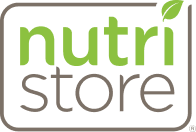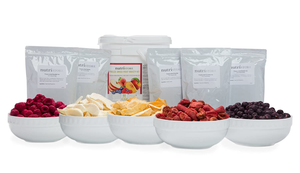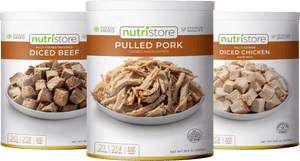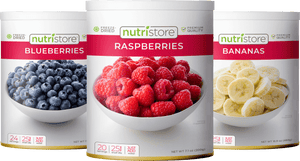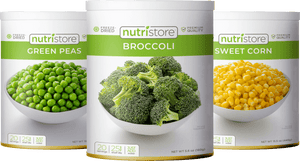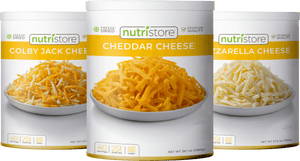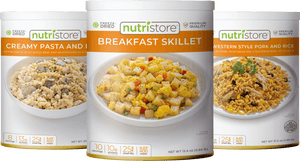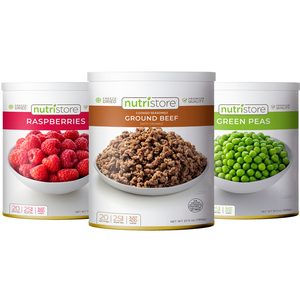How Long Freeze Dried Food Really Lasts & The 4 Threats to Shelf Life
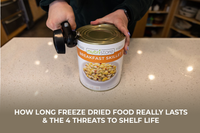
Like many, you may have found yourself asking; “how long does freeze-dried food last?”, “what about after it has been opened?”, or “how can I extend my food's shelf life?” All food eventually spoils. Everyone knows this. But how long does it really last and are there any secret tips or tricks to making your food last longer? The answer to extended shelf life might surprise you.
Even though there is no stopping the eventual decay of food, there are a few simple elements that can extend (or diminish) the shelf life of all freeze-dried ingredients and products. Keeping these four simple factors in mind while using freeze-dried foods will ensure the longest shelf life possible.
The 4 Freeze Dried Threats
1. Oxygen
Exposure to the air is one of the biggest threats to the longevity and quality of freeze-dried foods. Nutristore’s top-of-the-line freeze-drying process removes oxygen from the food to preserve it at its optimal state. When this same oxygen is reintroduced the product begins to reabsorb it and the process of expiration begins. Oxygen can have negative effects on the nutrients, vitamins, flavor, and color in the food. It can also increase the risk and growth of microorganisms like bacteria. Nutristore packages all goods in an airtight sealed number 10 can, which can only be opened with a can opener. This provides a strong added defense from the introduction of oxygen. Once your Nutristore can is opened, oxygen will start to take a toll. After being opened, freeze-dried products typically have a shelf life of 6-12 months. To help maximize this time, Nutristore provides a reusable lid that fits the number 10 can perfectly. This creates an effective air seal, allowing you to extend your opened can shelf life. Continue to keep the lid on and limit the amount of time the product is exposed to air.
2. Moisture
Moisture is another threat to the shelf life and quality of your freeze-dried foods. When moisture is combined with nutrients and time it creates an environment for microorganisms. This can then result in spoilage and the deterioration of your products. Shelf life is significantly shortened when food is stored in a damp area. Nutristore’s unique freeze drying process removes moisture from the food. When storing Nutristore, make sure that the cans are placed in a dry place. Once opened, Nutristore will remain in its freeze-dried state until water is added to reconstitute the product. After the ingredient or meal is reconstituted the shelf life becomes that of its original fresh state. To extend your open can shelf life, store your food in a dry location.
3. Light
Another threat to freeze-dried food is light. It is important to distinguish that “light” means direct and lasting sunlight. The lighting in your pantry is not going to have the same negative effect that direct sunlight will have. Nutristore’s aluminum can will effectively block out 100% of household lighting. However, when freeze-dried food is exposed to sunlight, it can deteriorate the proteins, vitamins, and nutrients in the product. This can quickly result in discoloration and off-flavors. It is optimal to store all Nutristore cans in a dark area, and just to be safe, not under direct light.
4. Temperature
The last preservation threat that can negatively affect the shelf life of Nutristore Freeze-Dried foods is temperature. Every food has a “breakdown point” relating to the temperature at which a food product will begin to break down the proteins and nutrients. For example; cooked vegetables have a completely different nutrition pallet than uncooked vegetables, this is due to the use of temperature and the natural breakdown point of the produce. When freeze-dried food is exposed to high temperatures, the nutritional value decreases as proteins break down and vitamins are destroyed, this affects the color, flavor, and even the odor of your food. Storing Nutristore in a hot environment will quickly deteriorate its shelf-life. By storing your freeze-dried ingredients and meals in a cool place (we recommend anywhere between 55 and 75 ℉), the optimal shelf life of 25 years can remain intact.
By understanding and effectively managing the threats of oxygen, moisture, light, and temperature, shelf life can be prolonged and extended to the point of becoming “nonperishable”. This becomes extremely important once a can is opened and you are looking to extend the open can shelf life of your product. Nutristore’s state-of-the-art freeze drying process ensures your food stays fresh and nutrient-packed for a longer period of time than any other food preservation technique!
Comments (7)
Your answers to all these questions are greatly appreciated. I had the same questions. I’m about to give you a try. 😋
If you want to extend the once opened shelf life of 6 to 12 months to 5 or more years you must first read the above in understanding the process. Once you open the can fill the remainder, or divide it up, into mylar bags. Insert a moisture absorber pouch and a oxygen absorber pouch into the bag. Then vacume seal the mylar pouch ensuring you get all the air out. Label your pouch with what is inside with the date you vacume sealed it and the lot number from the can (if it doesn’t have a lot number use the bar code). I recommend dividing it in portions dependant on the number of people your feeding ie: 1 cup=1 person 1 serving. Store pouches in a dark colored 5 gallon bucket and label the bucket with what you have in it. However its best if you don’t open the can until you actually need it to keep the full shelf life and freshness.
I usually get 10 to 15 years shelf life and sometimes more.
This is valuable information. I appreciate your sharing it, I now will be better prepared.
Once you open the product in the can, we you be able to put the rest in like 1 # Mylar bags?
great job … thank you. I would love to know if once the can is opened can I put the food we do not eat in plastic bags and put it back into the container and put the top on until we need it? would this help with oxygen, moisture, light and temperature once opened?
Once a can is Opened… Can you place left overs in a Mylar bag with an Oxygen absorber?
This is such important information to be reminded of…Thank You so much..
You are truly “caring people.” I appreciate You greatly!
Leave a Comment
You May Also Like

Best Ways to Prepare for Hurricane Season
2020 and 2021 were the 2nd and 3rd highest years for hurricanes on record. Learn ways on how you can best prepare for Hurricanes and other natural disasters!

Is Freeze Dried Food the Same as Dehydrated Food?
Knowing and understanding the difference between Freeze-drying and Dehydration helps when deciding which shelf-stable products are best to store and serve for your family.
